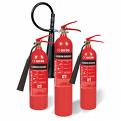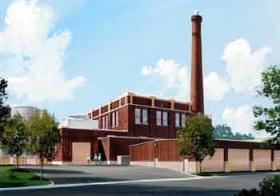CO2 concerns prevail in amazing EPA appeal
November 13th, 2008
In a Sierra Club air permit challenge, the Environmental Appeals Board has ruled that the EPA must address CO2, and it remanded “the permit to the Region for it to reconsider whether to impose a CO2 BACT limit and to develop an adequate record for its decision.” This decision should apply to air permits for facilities discharging CO2, pretty much everything, eh?
Here’s a snippet about alternatives, because this is what the EPA Comments are very concerned about in the Mesaba case:
The statutory section Sierra Club relies upon, CAA section 165(a)(2), does not require the permit issuer to independently raise and consider alternatives that the public did not identify during the public comment period. Here, Sierra Club did not identify during the public comment period the alternatives it raises in its petition.
So Sierra’s alternatives argument got 86’d (p. 6). But here’s some good stuff:
Although the Supreme Court determined that greenhouse gases, 2 such as CO , are “air pollutants” under the CAA, the Massachusetts 2 decision did not address whether CO is a pollutant “subject to regulation” under the Clean Air Act. Massachusetts v. EPA, 549 U.S. 497, slip op. at 29-30 (2007); In re Christian County Generation, LLC, PSD Appeal No. 07-01, slip op. at 7 n.12 (EAB Jan. 28, 2008), 13 E.A.D. at ___. The Region maintains that it does not now have the authority to impose a CO BACT limit because “EPA has historically interpreted the term ‘subject to regulation under the Act’ to describe pollutants that are presently subject to a statutory or regulatory provision that requires actual control of emissions of that pollutant.” U.S. EPA Region 8, Response to Public Comments (Permit No. PSD-OU-0002-04.00) at 5-6 (Aug. 30, 2007) (“Resp. to Comments”). We hold that this conclusion is clearly erroneous because the Region’s permitting authority is not constrained in this manner by an authoritative historical Agency interpretation.
But then they wiggle a bit and then clarify that they’re just sending it back:
By our holding today, we do not conclude that the CAA (or an 2 historical Agency interpretation) requires the Region to impose a CO BACT limit. Instead, we conclude that the record does not support the 2 Region’s proffered reason for not imposing a CO BACT limit – that 2 although EPA initially could have interpreted the CAA to require a CO BACT limit, the Region no longer can do so because of an historical Agency interpretation. Accordingly, we remand the Permit to the Region 2 for it to reconsider whether or not to impose a CO BACT limit and to develop an adequate record for its decision.
The timing is good, with Pres. Obama about to walk in the door. But what will Bush do in the remaining time?
AAAAAAAAAAAAAAAAAAAAAAAGH!
Kandiyohi burner moves to Rockford?
November 10th, 2008
Kandiyohi burner rears its ugly head again, this time in Rockford, Minnesota. Their Midtown burner project went down in flames not even a year ago, and here they are again.
From a blurb on Current Issues on the City of Rockford site:
Proposed Industry – Biomass Plant
Here’s the minutes from the meeting:
Workshop Meeting of Rockford City Council and Planning Commission
Here’s their powerpoint:
… which makes me wonder…
They say that they’ll burn waste wood.
Did they tell the City of Rockford that waste wood produces emissions of formaldehyde, NOx and fine particulates?
Did they tell the City of Rockford that their failed Midtown Eco-burner project would spew nearly 1 million pounds of pollutants in the air?
Did they tell the City of Rockford that there’s enough wood to power the project? (see next section)
They say that Minnesota is one of the best places for biomass, and have a map showing biomass resources.
Did they tell the City of Rockford that there’s enough wood to power the project?
Did they tell the City of Rockford that the Green Institute’s study showed that there is not enough biomass to power a similar burner proposed for St. Paul’s Rock-Tenn facility, that there’s not sufficient wood to go around?
Did they explain what’s changed since the Green Institute report?
They say it employs established technology.
Did they tell the City of Rockford that the MPCA has only issued one woody biomass permit, for Laurentian (Hibbing and Virginia) and that that permit was violated, so extremely that the MPCA issued fines and reworked the permit?
LEGALECTRIC POST: Laurentian “biomass” Air Permit Draft (second time around)
LEGALECTRIC POST: “Biomass” violates air permit – fines likely
They say that it will replace fossil fuel and nuclear.
Did they tell the City of Rockford what fossil fuel or nuclear power plants would be shut down if theirs is built?
Does the power purchase agreement provide for shutdown of any fossil fuel or nuclear generation?
They say it will expand the City of Rockford’s tax base.
Did they tell the City of Rockford that for the Midtown burner they lobbied for and received an exemption from utility personal property tax?
Minn. Stat. 272.02, Subd. 82.
Biomass electric generation facility; personal property.(1) be designed to utilize a minimum 90 percent waste biomass as a fuel;
(2) not be owned by a public utility as defined in section 216B.02, subdivision 4;
(4) be designed to have capability to provide baseload energy and district heating.
Did they tell the City of Rockford that their failed Midtown project would not have paid utility personal property tax to the county, city and school district because of this exemption?
Did they tell the City of Rockford that they would NOT seek an exemption from utility personal property tax for this project?
Did they commit to paying utility personal property tax to the county, city and school district?
They tout process steam and district heat potential.
Did they tell the City of Rockford of the infrastructure expense necessary to utilize this steam?
Did they tell the City of Rockford that the St. Paul District Heat plant had steam heat infrastructure in place for much of its St. Paul customer base?
They say there will be no odors.
Did they tell the City of Rockford the basis for that statement?
Did they tell the City of Rockford how many pounds of emissions are expected?
They say regarding the failed Midtown burner project that some in the neighborhood were anti-business and anti-growth.
Did they tell the City of Rockford the basis of the neighborhood’s objections?
LINK: Neighbors Against the Burner
They say regarding the failed Midtown burner project that NIMBY caused some local politicians to flip-flop.
Did they tell the City of Rockford the factors upon which local politicians rejected the project?
They say regarding the failed Midtown burner project that Xcel Energy was difficult to negotiate with?
Did they tell the City of Rockford the material terms of their power purchase agreement proposal that Xcel rejected?
They say regarding the failed Midtown burner project that activists exaggerated emissions.
Did they tell the City of Rockford the specific emissions levels projected?
For Midtown Eco-Burner, per air permit application:
NOx 160 tons (320,000 lbs)
SO2 40 tons (80,000 lbs)
Ozone (O3) (not emitted directly)
CO 160 tons (320,000 lbs)
Lead 150 tons (also a “HAP”)
Particles 36 tons (72,000 lbs)
– PM 10 – 65 tons (130,000 lbs)
– PM 2.5
They say regarding the failed Midtown burner project that cumulative impacts were claimed even though the project had low emissions.
Did they tell the City of Rockford of the existing arsenic contamination and other impacts of prior industry suffered by the Phillips community?
Did the tell the City of Rockford of the efforts that led to legislation passed requiring that cumulative impacts be considered?
They say that emissions for this project would be much lower than for District Energy or Hibbing.
Did they tell the City of Rockford the basis for this claim?
Did they provide the City of Rockford the emissions modeling to back up this claim?
They claim multiple options for water use and discharge.
Did they tell the City of Rockford what their plans are?
Do they have plans for water use, cooling and treatment?
Did they disclose the cost of water and treatment if they use the city’s system?
Did they disclose impacts of on-site water intake and discharge?
They claim their project will reduce emissions that may cause climate change.
Did they explain to the City of Rockford how a new power plant with new emissions without a linked closing of any other facility would reduce emissions?
They say they have $75 million in private capital.
Did they explain to the City of Rockford why they have this capital now but did not have it for the Midtown project and relied on public grants and financing?
They say they have a financing package prepared by Piper Jaffray.
Did they provide a pro forma to the City of Rockford?
Did they provide any documentation of this financing package?
They claim “project team experience” on a number of projects.
Did they tell the City of Rockford what project partners have what experience?
Did they tell the City of Rockford that Kandiyohi has no experience in successful development, construction or operation of a power plant?
Did they tell the City of Rockford that Kandiyohi has experience only in its failed Midtown burner project?
This project is yet another pig in a poke…
Here’s some information from the last time around, so that the City of Rockford can compare with what they receive:
Midtown Air Permit application – note it took them 3 submissions to get one that the MPCA would accept
MPCA Documents
Neighbors Against the Burner & Other Org’s Documents
Petition for Environmental Assessment Worksheet
EAW – Affidavit of Muller in Support of Petition
Green Institute Comments in Support of EAW
David Morris – ILSR – Position on Kandiyohi Midtown & Timeline of Events
Jeff Cook Coyle (formerly Green Institute) letter to Legislators
Alan Muller Presentation
Muller – Saying NO! to permits for Kandiyohi\’s Midtown Burner
(Air emissions info on slide 22)
Another utility under FERC investigation
November 9th, 2008
Shame on you, you naughty utilities! FERC is investigating yet another utility for scheduling transmission reservations for local load and instead using them for wholesale sales, or put another way, using network transmission service instead of point-to-point service to import power to facilitate off-system sales. Remember when Otter Tail Power got nailed for that recently?
It’s not like this is anything new, but I think it’s a lot more widespread, and given the market basis for electricity sales, it’s “incented” in the systemic structure, and FERC’s power to act on these violations is relatively new. Here are some more examples:
And I’ll spend a little time digging up some more…
Anyway, now Westar Energy in Kansas is under investigation, and reported this in a recent SEC filing. Here’s the story that popped up on that:
Westar’s power line use probed
At issue is whether Westar deliberately scheduled more capacity than it needed, Burns said.
Reporter Duane Schrag can be reached at 822-1422 or by e-mail at dschrag@salina.com.
Also noteworthy is that Westar Energy had, like many utilities, a DECREASE in sales, in the case of Westar, 2% decrease admitted in a November 7, 2008 press release.
How many other utilities out there are under investigation, and how many are NOT under investigation when they should be? Something tells me this is a common practice.
Circumventing state authority — transmission in search of “need”
November 7th, 2008
What can I say, there’s no photo for “queasy feeling of impending stink”
I’ve got this non-specific queasiness. Correction — I’ve got a specific queasiness and I think I know why. Today was a “Stakeholder Meeting” of the Organization of MISO States. That’s right… ready? OMMMMMS … OMMMMMS … OMMMMMS…
I guess I just didn’t meditate myself into the right state of mind… I wasn’t hypnotized by the baffling bullshit. Y’all know how excited I get when these utilities try to pass of some lame excuse as “need” for transmission. Now we’re getting a wholesale version of that, where need is presumed, and they’re going to take a few months and a lot of people’s time figuring out some bogus justification and in the process, a new regulatory scheme that circumvents state regulation and establishes a new regional transmission regulatory authority. Watch… it’s straight out of the Wind on the Wires legislative agenda for 2005… and Mikey Bull is on hand to grease the skids for his former boss Gov. Pawlenty and the new boss… WOW, subset of the Izaak Walton League. That’s what I think is coming down the pike.
Whatever is she talking about, you say… it’s called the Organization of MISO States.
Who is the Organization of MISO States?
OMS Members – that isn’t listed
Who are they speaking for? Seems they’re claiming to speak for the Public Service Commissions and Public Utilities Commissions of the many states that are MISO.
And whoever they’re speaking for, they’re speaking a lot:
Here’s what they said about the National Interest Electric Transmission Corridors:
I have this thing about trajectory, and I’ve got a sense where this is going. So now my job is to get up to speed on this, explain it all in a very clear way that can’t be misunderstood, and keep an eye on my navel… OMMMMMS.
Oh, and did I mention that “cost allocation” is THE driver? In this time of zero capital available for “capital expenditures” cost allocation and recovery are issues. What’s wrong with the current MISO scheme of cost allocation?
And the big question: Who’s minding the public interest?
Dairyland backs off… but…
November 7th, 2008
There was a public meeting scheduled for next week about Dairyland’s plan to open a new coal ash dump, er… an “off-site disposal facility for coal combustion byproducts.” Uh-huh…
A couple of days ago, they canceled it, and had a press conference, where they stated:
Today, Dairyland Power Cooperative is extremely pleased to announce that we are indefinitely suspending the permitting process… All testing and permitting activities and future development plans will be halted at all three potential sites: the two sites in the town of Harmony and the site adjacent to the Vernon County landfill.
Here’s the whole enchilada:
And more:
Same point, same language distributed differently… IT’S OVER!





